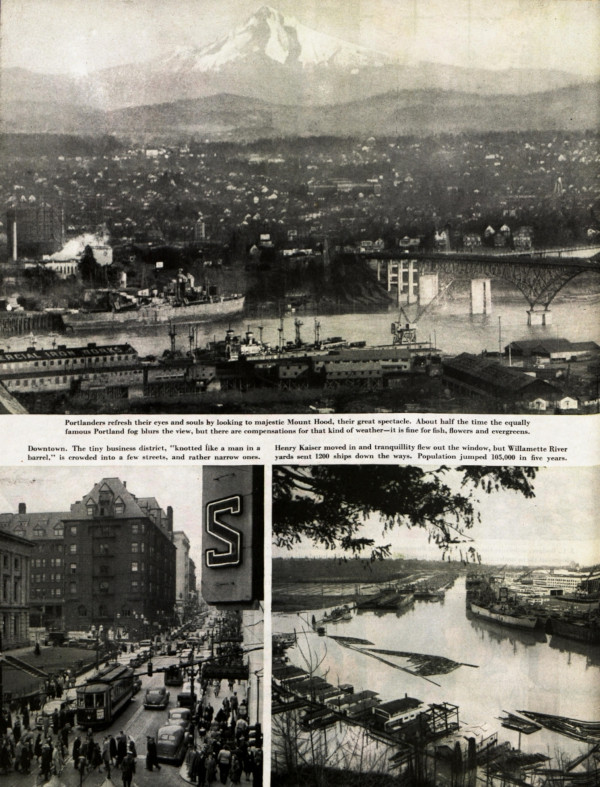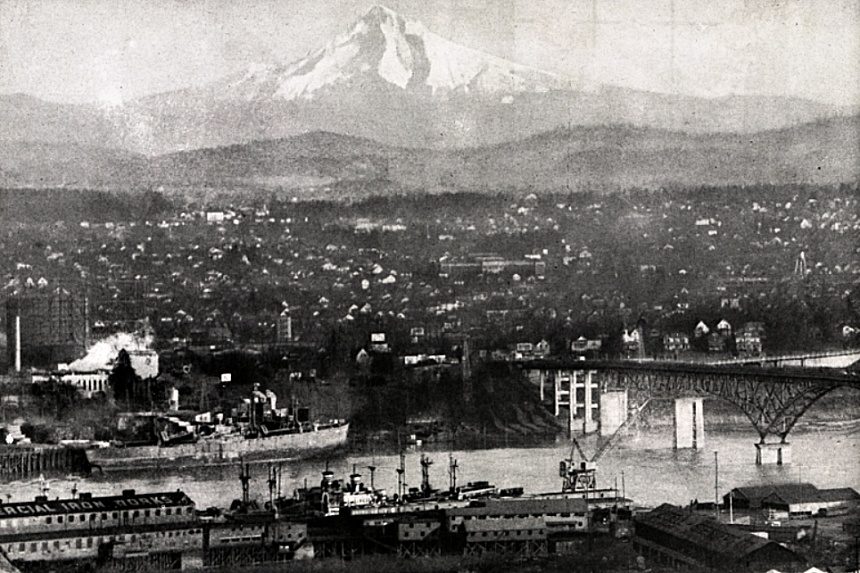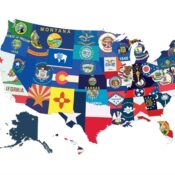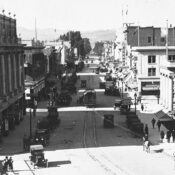In 1945, The Saturday Evening Post began publishing profiles of the major cities in America, highlighting each city’s attractions and unique character. The war was ending, and it was time to turn the nation’s attention to her own backyard. Some of the features hint at problems, but most are brimming in anticipation of living in a modern era free from war and sacrifice.
In 1947, Portland, Oregon was a city with a split personality, according to writer Richard L. Neuberger: “The general uncertainty between peaceful past and brawling future is so prevalent that often the city’s left hand knoweth not what the right hand doeth.” Would it become an industrial giant or stay a pastoral pine hamlet tucked under Mt. Hood?
If Portlanders were to have anything to do with it, things would stay as they always had been. They had a “reluctance to unfold the municipal wallet” and were happy to stick with its tiny business district and puny industrial plants. The city lacked even one luxury hotel, and “Nowhere in town can the wayfarer buy a cocktail or highball.” As to politics, “Portland is glued to conservatism.”
During World War II, Portland found itself the uneasy host of a massive ship building operation, with a population boom to match. The city became overrun with night clubs and “the Willamette became so foul that fish could attain the uplands only at flood stage; the low-water fall run withered away for lack of oxygen.” Then, thanks to the Lend-Lease Act of 1941, which allowed the U.S. to loan war supplies to any nation that was vital to the defense of the United States, Portland became the main exporter to Russia. They shipped them everything from locomotives to stew, so much so that “it ranked third in the nation for exports in 1945—behind only New York and Philadelphia.”
After the war, however, 88,000 factory workers lost their jobs, lumber mills closed, and Portlanders contemplated their future: Would they embrace hydroelectric power and become producers of aluminum cans and frozen foods, or would they return to their pre-war idyll? They couldn’t have foreseen the social, economic, and political changes on the horizon.
But 1947 Portland held on tightly to her rain-drenched charms. Neuberger concluded, “Lewis and Clark cursed the clinging dampness, but contemporary Portlanders are more philosophic. They look at the foaming, fish-filled creeks and the tossing acres of tulips cultivated by refugees from Holland, and they know that the rain makes possible such blessings. Roses and firs alone, they feel, are compensation enough for the hours spent with umbrella, slicker and galoshes.”

Featured image: Portland, Oregon, 1947 (photo by Pat Coffey, ©SEPS)
Become a Saturday Evening Post member and enjoy unlimited access. Subscribe now



